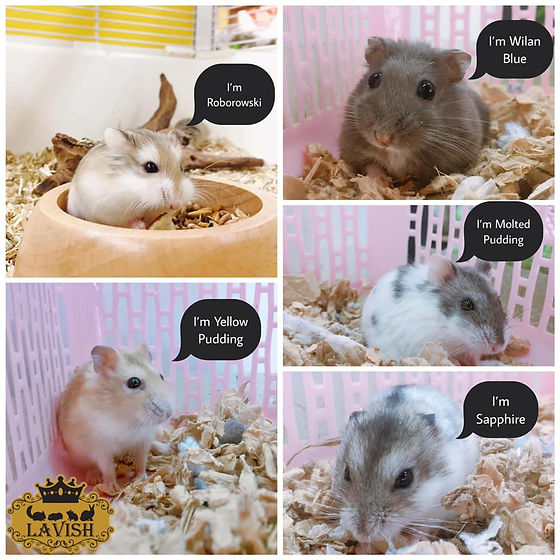Hamster Color Variations
Hamsters are not only adorable pets but also come in a captivating array of colors and patterns. Understanding the diverse coat variations available can help hamster enthusiasts choose the perfect pal for their homes. In this article, we will delve into the different hamster color variations, providing insights into their genetic origins, care tips, and why color doesn’t affect their delightful personalities.
Types of Hamster Coat Colors
Hamsters exhibit a wide variety of coat colors, primarily due to the genetics that dictate their pigmentation. The most common hamster species kept as pets are the Syrian hamster, dwarf hamster varieties, and Roborovski hamsters, each with specific color variations. Understanding these types helps prospective owners identify preferred breeds more easily.
Standard Colors
Standard hamster colors include the classic golden, black, and gray hues. The golden hue is often associated with Syrian hamsters and is characterized by its warm, vibrant color. This color evolves with the light, sometimes showing shades of cream and yellow. For instance, a golden hamster may be seen displaying a more vibrant golden coat in natural sunlight, something that adds to its appeal.

Dilute and Agouti Variations
Dilute hamsters showcase a faded version of their standard colors, appearing more pastel-like. For example, a dilute golden hamster presents a soft, creamy appearance rather than a striking gold. The agouti pattern is notable for its banded fur, characterized by black-tipped hairs that emulate a natural, wild look. Many dwarf hamsters like the Campbell’s dwarf can exhibit these remarkable coat types, making them even more lively additions to your small pet family.

Patterns in Hamster Coats
Hamsters’ coat colors are delightful, but patterns play a significant role in visual variety. Several patterns exist in pet hamsters, bringing a unique charm to every animal’s personality, showcasing just how diverse these pets can be.
Spotted and Banding Patterns
Spotted and banded patterns are very popular among hamster enthusiasts. Spotting can be random, producing a beautiful mix of color and personality in hamsters. For instance, a spotted Syrian hamster can display random patches of white over its otherwise golden coat, adding a distinctive flair to its appearance. On the other hand, banding, often seen in dwarf hamsters, can create a mesmerizing pattern along a hamster’s back, highlighting their unique lineage.

Color Points
Color point hamsters, akin to Siamese cats, display specific colored points on their nose, ears, and feet, contrasting with a lighter body coat. This variation is particularly stunning in short-haired Syrian hamsters. They present a sleek design that captures attention—perfect for owners looking to showcase beautiful hamster variances.

Maintaining Your Hamster’s Coat
Regardless of the color or pattern, all hamster coats require consistent care to maintain their beauty. Hamsters generally groom themselves, but owners play a vital role too. Here’s how you can ensure your hamster looks its very best.
Regular Grooming Tips
Regular grooming promotes healthy fur. Occasionally brushing your hamster helps to remove loose hairs and dirt. Additionally, check for any signs of mats particularly seen in long-haired breeds, to keep their coat looking pristine. Don’t forget, brush gently to avoid stressing your furry friend—this should be an enjoyable bonding experience!

Nutritional Support
A balanced diet plays a significant role in enhancing your hamster’s coat condition. Ensure that your pet receives nutritious food rich in proteins—think seeds, fresh fruits, and vegetables. These nutrients help keep your hamster’s coat shiny and its skin healthy, ultimately reflecting on their appearance.
Conclusion
In conclusion, understanding hamster color variations is an exciting aspect of hamster care that can enhance the relationship between pet owners and their furry companions. Engaging with such delightful pets comes with the responsibility of proper care, including grooming and a balanced diet, essential for any hamster, regardless of its beautiful coat colors or patterns. After all, every hamster has a unique personality that shines through its vivid and distinctive appearance.
FAQ
1. What is the most common hamster coat color?
The golden color is the most commonly recognized among hamster coats, especially in Syrian hamsters. It’s vibrant and often sought after due to its classic appeal, and it can show variations in richness and hue based on the environment.
2. Can hamsters change coat colors?
Hamsters generally do not change their coat colors drastically; however, seasonal changes can cause slight differences. Moreover, health and nutritional status can play a role in the coat’s appearance, influencing brightness and shine.
3. What dietary needs enhance a hamster’s coat appearance?
A diet rich in proteins, fresh fruits, seeds, and vegetables supports a healthy coat. Such nutrition leads to a shiny and vibrant appearance, making it essential for all hamster owners to provide a varied diet.
4. How do I groom my hamster without stressing it out?
To groom your hamster effectively, do it gently and slowly. Start by allowing them to get accustomed to brushing and avoid long sessions at once. Combine brushing time with treats to make it a more positive experience for your furry friend.
5. Are rare color variations more expensive?
Yes, unique colors or patterns may command higher prices based on rarity and demand among hamster lovers. Factors affecting price can include genetics, breeding, and market trends, so researching well is advisable before buying.
